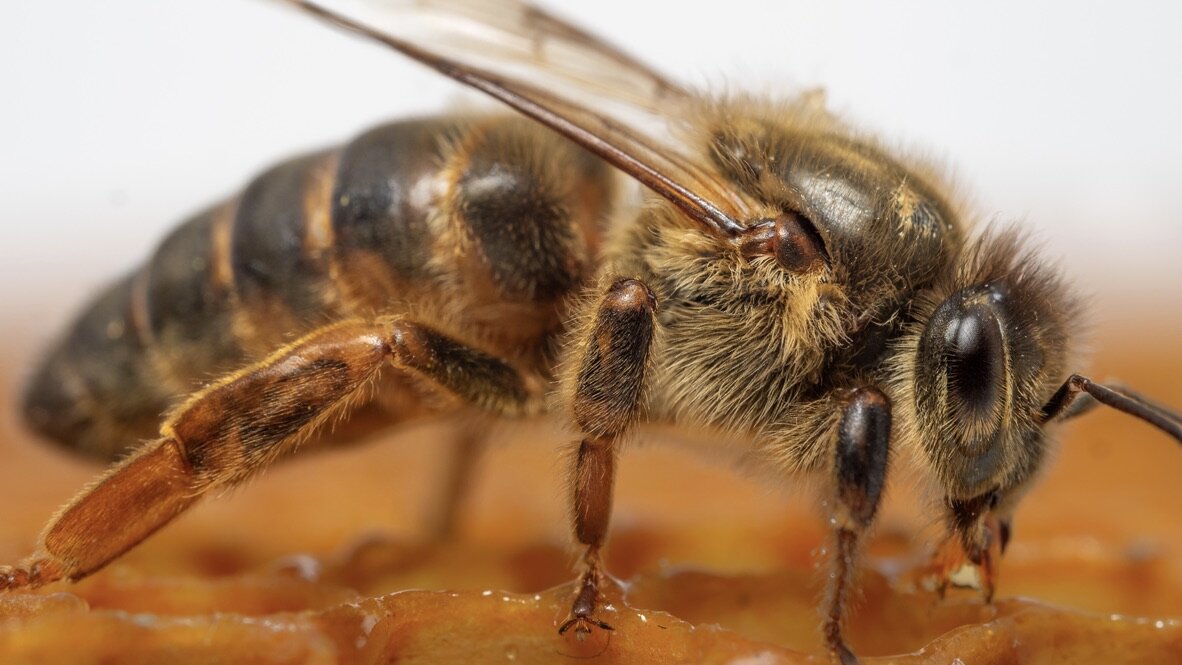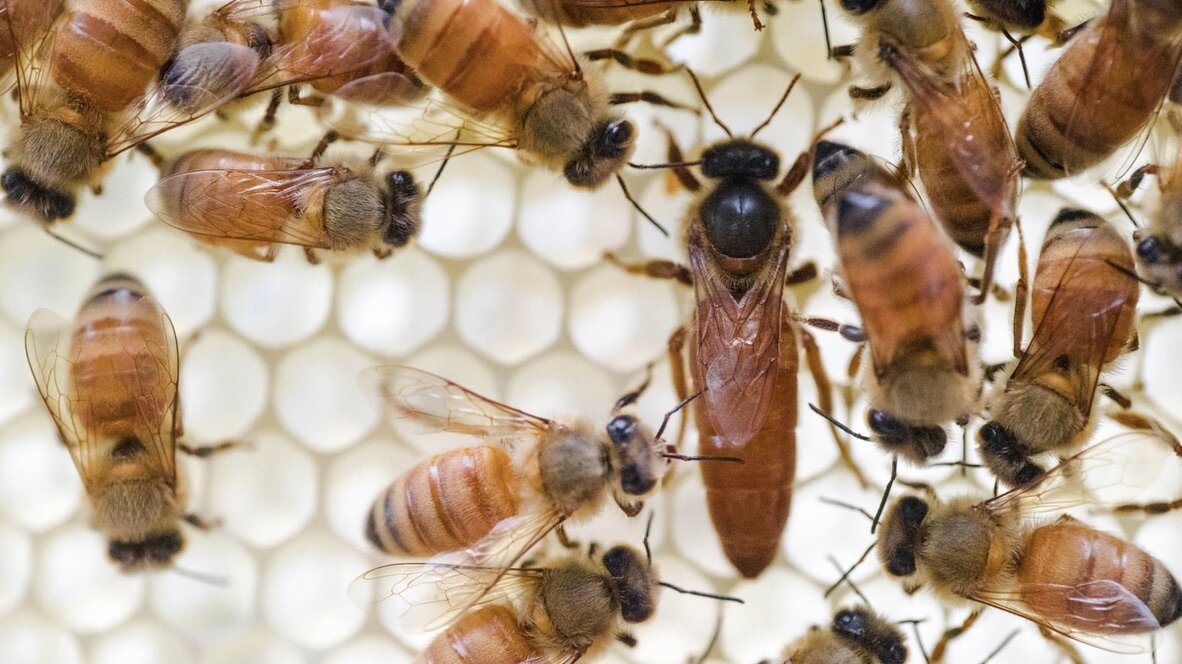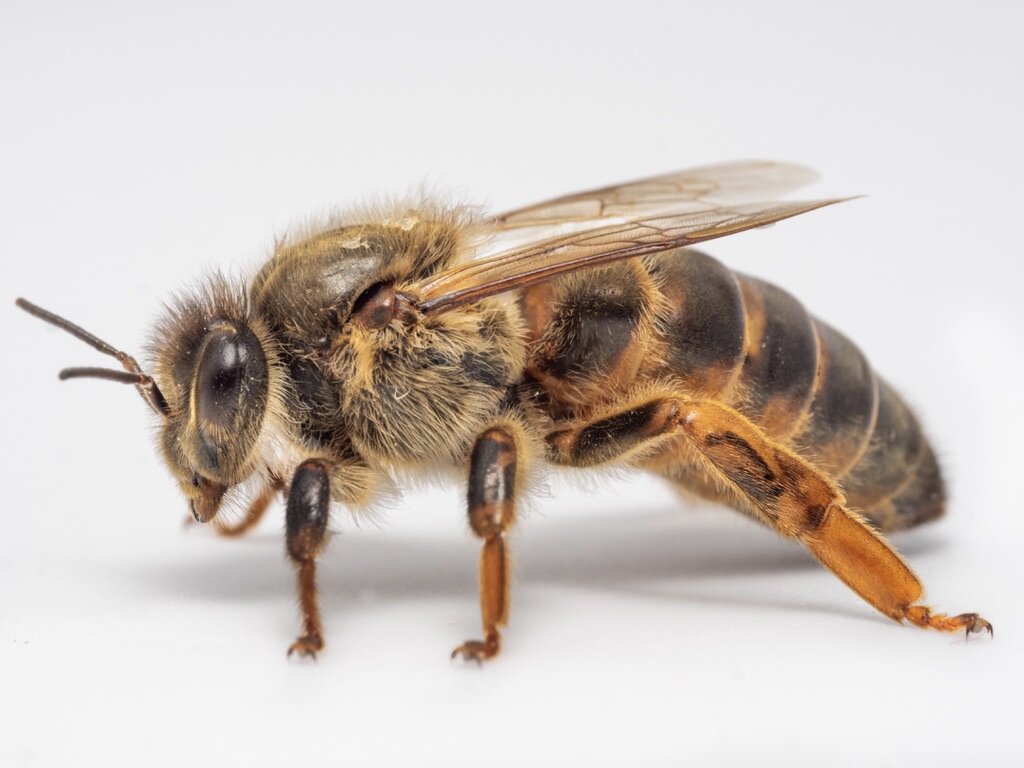As the mother of the hive, the queen honey bee is the only indispensable member of her colony. But calling her the "queen" is actually a bit of a misnomer. Her worker bee daughters call all the shots and are responsible for feeding and cleaning the queen, dictating where and how many eggs are laid, and ultimately deciding when to send her off with a swarm or supersede her by raising up a new queen! Read on to learn all about her Royal Highness.
Scientific Name: Apis mellifera
Common Name: Honey bee (queen)
Family: Apidae
Species Range: Every continent except Antarctica!
Identification Tips: Queens have long abdomens with 3 more segments than her worker bee daughters. When folded at rest, her wings do not cover her entire abdomen. Perched with her long, thin legs, she’ll dip her long abdomen all the way to the back of a comb cell to lay an egg. She will also have a bald thorax since she is not responsible for foraging for pollen. Queen honey bees can vary in coloration and may have different coloration from her worker daughters. Some are dark, some are light, and some are stripy!
Nesting Habits: Along with her worker bee retinue, queen honey bees nest in large cavities filled with parallel beeswax combs for developing brood, and storing food.
Preferred Forage: Queen bees do not forage for floral resources. Her worker bee daughters are responsible for feeding and caring for her so that she can continuously lay eggs inside the hive.

Active Season: Honey bees are ‘active’ year-round. Clustering and surviving the winter eating honey inside the hive.
Fun Fact: Not unlike Britney Spears, each individual honey bee queen has a signature scent. Queens produce a mandibular pheromone that her specific workers are used to. If an intruder bee comes in smelling like another queen, you’d better believe they’ll be kicked to the curb in short order!

